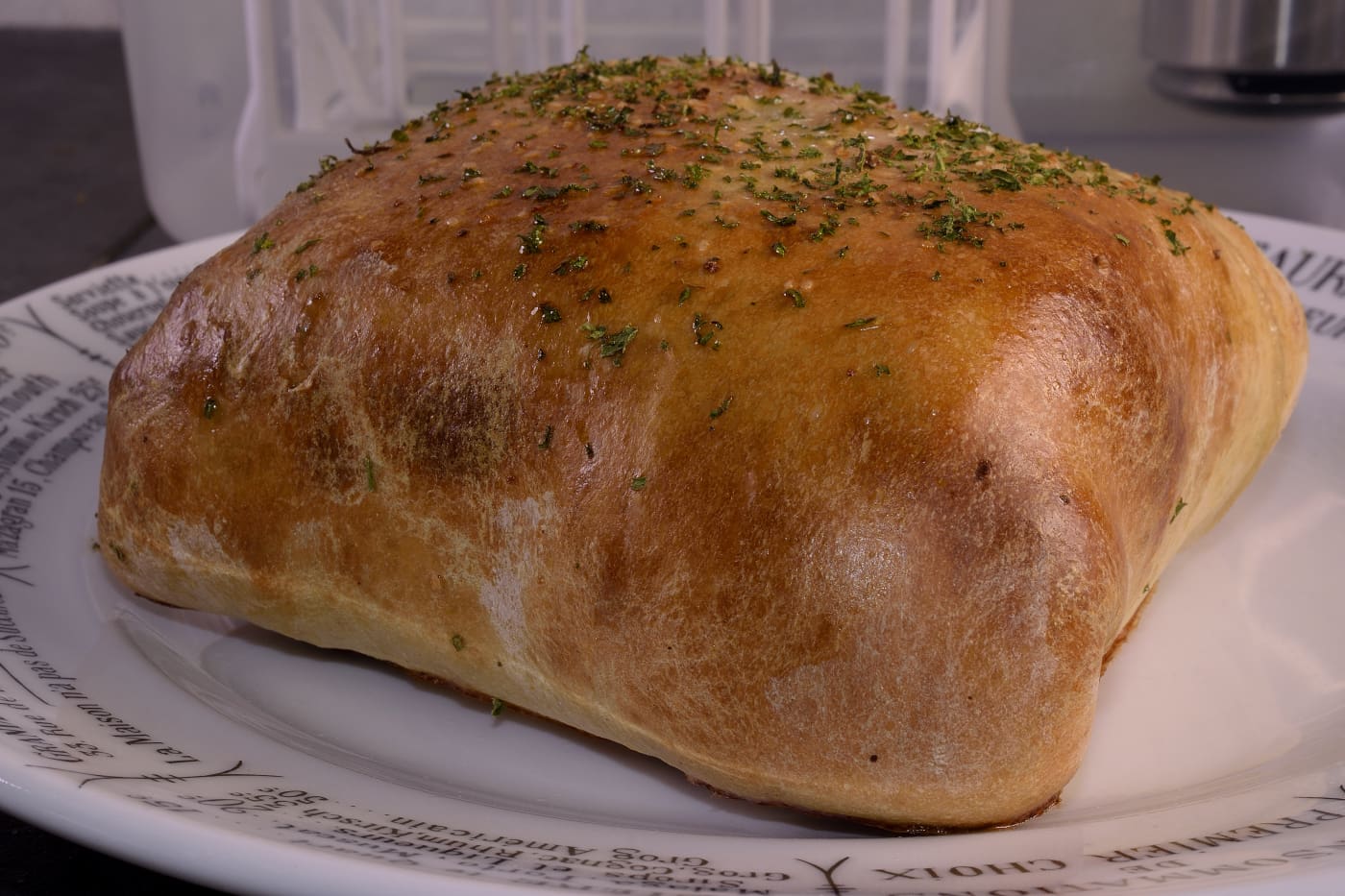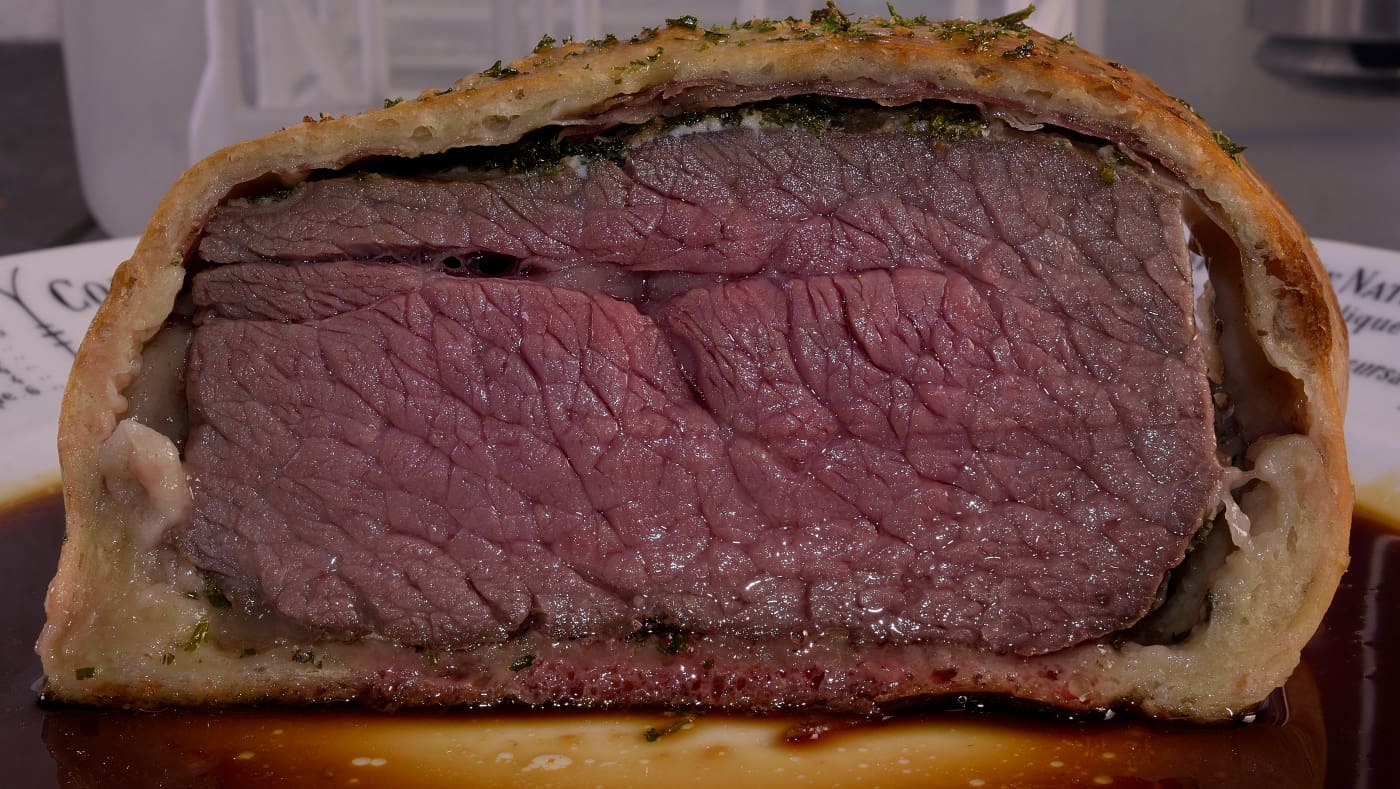Above: Lipavi C10 container, N10 polycarbonate racks. Lipavi C10L-UNIR lid.
Actual prep time: 90 minutes
Serves 3-4
Level of difficulty 3.25
As popular as tri-tip has become in some markets, it is still limited in availability. Frustrated enthusiasts complain that it is scarce back east and down the seaboard. Some say they get blank stares from butchers as if they never heard of it. Just another good reason to move west!
Put on your artist’s smock
Many sous vide enthusiasts are drawn to what is colloquially referred to as “Wellington.” Without sermonizing the reader, let us just say that all “Wellingtons” are served “en croute” (in a crust), but not all dishes served en croute are called Wellingtons. Puff pastry is not necessary to create the striking visual effect associated with Beef Wellington. However, the basic principle remains the same.
Solutions
We make bread dough seem difficult. Mixing it and kneading it gives one a certain sense of accomplishment. Once we are required to wait for the dough to double in bulk, we become nervous wrecks. We stare, we press on it, desperately hoping to see telltale signs of increase. We wonder if it will EVER expand. One solution is to make the dough at night–after 5pm. Put it in the oiled bowl as prescribed, cover it, leave it at room temperature and sleep in. By the time you wake up, it will have risen as much as it is going to. Then it can be used any time that day.
Procedure:

Vacuum seal the roast in heat rated sous vide bags.
Sous vide process the tri-tip @ 129 F/54 C X 12 hours.
Remove from tank, shock (in bag) in iced water until it achieves 70 F/21 C. Refrigerate to 40 F/4 C until day of use.
Combine the flour, salt, vegetable oil, yeast, and water; mix until it forms a smooth ball. Put the dough in an oiled bowl and cover. Allow to proof overnight.
Cut a square piece of tri tip to approximately 1lb/450g. Dust with egg whites, mist with water and sprinkle with seasonings. Allow to rest five minutes. Sear in a hot pan or oven broiler just to darken the surface. Chill in refrigerator.
Preheat the oven to 400F/200C. On a lightly floured board, roll the bread dough to about 12″/30 cm like a individual pizza. Paint the disk with egg wash and arrange the capicola/prosciutto on the dough–leave a margin around the edges. Place the roast in the center of the dough and fold up like a package. Turn the package upside down to hide the seams. Poke a hole in the top and paint the package with egg wash.

Bake the package in the oven for 25 minutes. Use a probe thermometer inserted in the hole to measure internal temperature of approximately 130F/54C. Let it rest for 5 minutes. This will make it easier to handle–another common oversight. Relax. It won’t get cold. Using a sharp slicer knife, cut off one end of the package wherever the seams are most visible. Saw gently with the knife. Cut the package in slices of desired thickness, and then trim off the other crusty end. Easy does it–long smooth strokes.

Rock and roll!
Norm King
visit us live on Facebook at (2) SVR–Sous Vide Resources; Low Temperature Pasteurization, Sous-B-Q™, | Facebook


